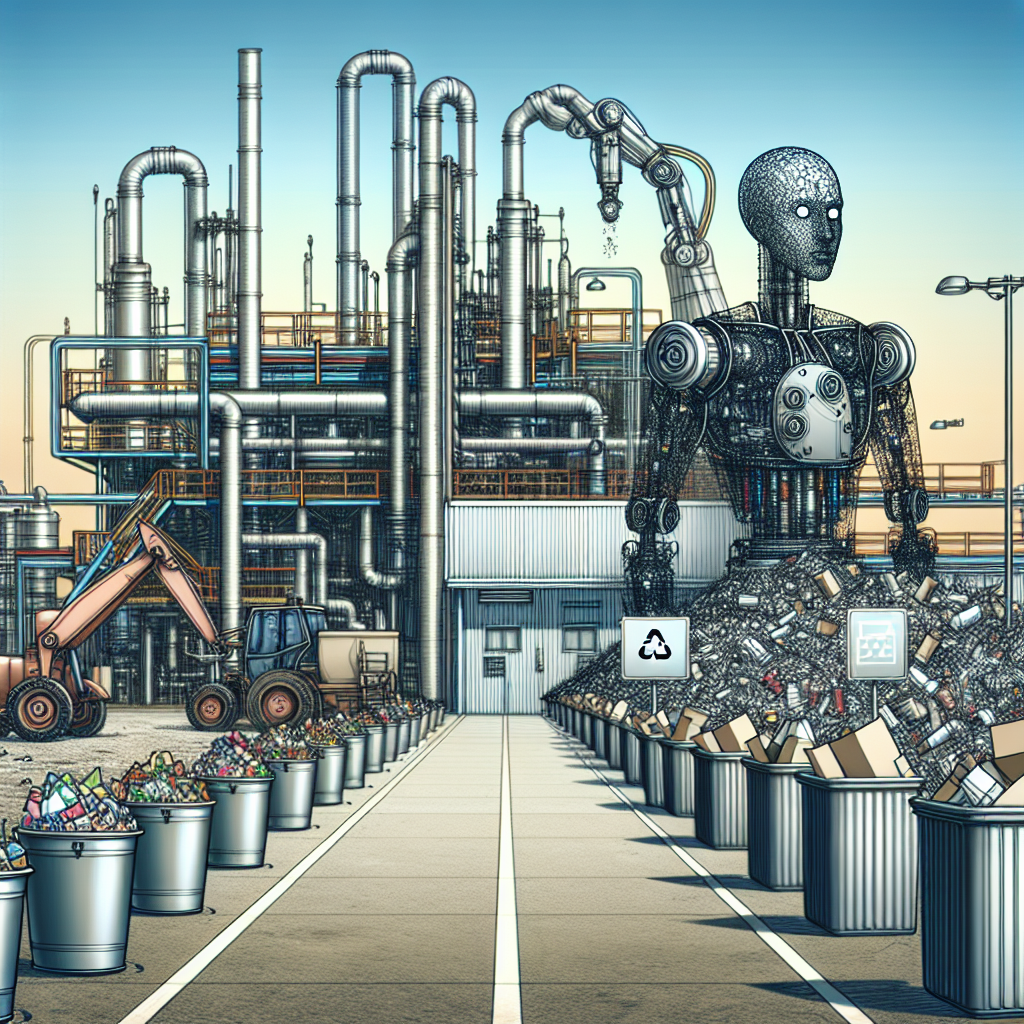The Role of AI in Waste Reduction in Manufacturing
In today’s world, the need for sustainable practices is more critical than ever. With the rise of global warming and environmental concerns, industries are continuously looking for ways to reduce waste and minimize their carbon footprint. One of the most significant contributors to waste production is the manufacturing sector. However, with the advent of artificial intelligence (AI), manufacturers now have a powerful tool at their disposal to help reduce waste and improve efficiency.
AI, a branch of computer science that aims to create intelligent machines capable of learning and problem-solving, has been making waves in various industries, including manufacturing. By leveraging AI technology, manufacturers can optimize their production processes, identify inefficiencies, and streamline operations to minimize waste generation. In this article, we will explore the role of AI in waste reduction in manufacturing and how it is revolutionizing the industry.
1. Predictive Maintenance
One of the key ways AI is helping manufacturers reduce waste is through predictive maintenance. Traditional maintenance practices often involve regular inspections and scheduled maintenance, which can be costly and time-consuming. With AI-powered predictive maintenance, manufacturers can monitor equipment in real-time, analyze data to predict potential failures, and schedule maintenance only when needed. This not only reduces downtime but also prevents unexpected breakdowns that can lead to wasted materials and resources.
2. Quality Control
AI is also being used in manufacturing for quality control purposes. By analyzing data from sensors and cameras, AI can detect defects and anomalies in products during the production process. This allows manufacturers to identify and rectify issues early on, reducing the likelihood of producing defective products that will ultimately end up as waste. By improving product quality, manufacturers can minimize rework and waste, ultimately saving time and resources.
3. Supply Chain Optimization
Another way AI is helping manufacturers reduce waste is through supply chain optimization. By analyzing data from various sources, AI can help manufacturers optimize their supply chain, identify inefficiencies, and reduce waste in transportation, inventory management, and production processes. AI can also help manufacturers forecast demand more accurately, leading to better inventory management and reduced waste from overproduction.
4. Energy Efficiency
AI can also play a significant role in reducing waste by optimizing energy usage in manufacturing processes. By analyzing data from sensors and monitoring energy consumption in real-time, AI can help manufacturers identify opportunities to reduce energy waste and improve efficiency. This can lead to significant cost savings and environmental benefits, as energy-efficient processes require fewer resources and produce less waste.
5. Process Optimization
AI can also help manufacturers optimize production processes to reduce waste. By analyzing data from sensors and production lines, AI can identify inefficiencies and bottlenecks in the manufacturing process. This allows manufacturers to make real-time adjustments to improve efficiency, reduce waste, and increase productivity. By continuously optimizing processes with AI, manufacturers can achieve higher levels of efficiency and sustainability.
FAQs
Q: How does AI help in reducing waste in the manufacturing sector?
A: AI helps reduce waste in the manufacturing sector by optimizing production processes, predicting maintenance needs, improving quality control, optimizing the supply chain, increasing energy efficiency, and reducing waste in various aspects of production.
Q: What are the benefits of using AI in waste reduction in manufacturing?
A: The benefits of using AI in waste reduction in manufacturing include increased efficiency, reduced downtime, improved product quality, optimized supply chain, energy savings, and cost reductions.
Q: How can manufacturers implement AI for waste reduction?
A: Manufacturers can implement AI for waste reduction by investing in AI-powered technologies, collecting and analyzing data from sensors and production lines, training AI algorithms to predict maintenance needs and quality control issues, and continuously optimizing processes with AI.
Q: What are some examples of AI-powered technologies used in waste reduction in manufacturing?
A: Some examples of AI-powered technologies used in waste reduction in manufacturing include predictive maintenance systems, quality control systems, supply chain optimization tools, energy management systems, and process optimization software.
Q: How can AI help manufacturers achieve sustainability goals?
A: AI can help manufacturers achieve sustainability goals by reducing waste, improving efficiency, increasing energy efficiency, optimizing processes, and minimizing the environmental impact of production processes. By leveraging AI technology, manufacturers can move towards a more sustainable and eco-friendly manufacturing model.
In conclusion, AI is revolutionizing the manufacturing industry by helping reduce waste, increase efficiency, and improve sustainability. By leveraging AI-powered technologies, manufacturers can optimize production processes, predict maintenance needs, improve quality control, optimize the supply chain, increase energy efficiency, and reduce waste in various aspects of production. With AI, manufacturers can achieve their sustainability goals and contribute to a more environmentally friendly future.

